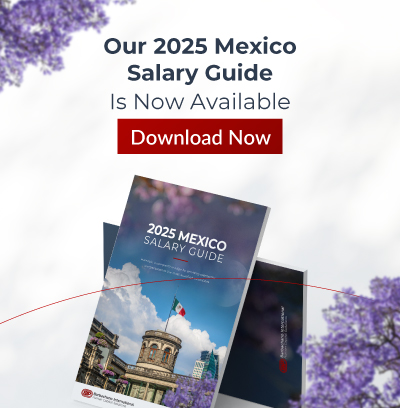
Alex, a bright, talented professional who’s ready for a new challenge, is scrolling through executive job listings one morning. She’s searching for a place where her skills are valued, her contributions will matter, and her career can flourish. As she sifts through several descriptions that sound basically the same, one finally catches her eye. The salary and benefits sound good, but the company’s story is what really stands out. She can tell this company values its employees because it offers vigorous career development, a vibrant work culture, and a mission that aligns with her own values. As Alex reads, a sense of connection and excitement grows—she knows this is it.
This is the power of a well-crafted Employee Value Proposition (EVP)—a narrative that speaks right to the heart of what top talent is seeking. Let’s talk about how you can design an EVP that captures the imagination and loyalty of exceptional candidates like Alex.
Understanding EVP Basics
An EVP aligns what employees want with what an organization needs. According to WeThrive, an EVP incorporates the benefits and opportunities an organization provides employees in return for the skills, capabilities, and experiences they bring to the table. It’s the promise you make to your employees and potential hires about what it’s like to work at your company.
Why Is an EVP Important?
In a nutshell, a compelling EVP sets your organization apart, thereby attracting great talent, improving employee engagement, and sustaining retention rates. Employer branding experts Link Humans assert that a strong EVP increases new-hire commitment by 29% and decreases annual employee turnover by a whopping 69%. Clearly, when employees feel valued and aligned with the company’s mission and culture, they’re far more likely to stay longer and perform better.
5 Steps to Designing a Powerful EVP
- Conduct a Comprehensive Analysis
Start by understanding what your current employees value as well as what your target audience wants. Use surveys, focus groups, and exit interviews to gather these insights, and look for patterns in the data. What do employees appreciate most about working at your company? What areas need improvement? What are potential candidates looking for in a brand? Understanding these elements helps you pinpoint the core aspects you should highlight in your EVP.
- Define Your Unique Offerings
Says EdTech giant Preply, “Your company’s ability to recruit and retain the best-qualified workers hinges partly on how well you stand out from other employers.” Factors that make you unique could be anything from your organizational culture to career development opportunities to work-life balance. Always highlight the offerings that align with your target talent pool’s needs and desires.
- Align with Company Goals and Culture
Practice what you preach—your EVP must authentically reflect your company’s goals and culture. Never make claims simply because they sound good; people will see through that ploy quickly. For instance, if your company prides itself on innovation, your EVP should highlight opportunities for creative work and professional growth.
- Communicate Clearly and Consistently
Find ways to communicate your EVP across multiple channels. Utilize your company website, social media, and job descriptions, and make sure you bring it up during interviews. Consistent, broad messaging reinforces your EVP and makes it more memorable.
- Evaluate and Iterate
An EVP isn’t a set-it-and-forget-it proposition. Regularly review and update it to keep it relevant and effective. WeThrive suggests keeping an eye on key metrics such as employee satisfaction scores, retention rates, and feedback from new hires to gauge your EVP’s impact.
Signs Your EVP Isn’t Working
Despite your best efforts, sometimes your EVP may not hit the mark. Symphony Talent outlines several signs that your EVP might need a revamp:
- High turnover rates
- Low engagement levels
- Difficulty in attracting top talent
- Negative feedback from employees
- Lack of alignment between your EVP and employee experiences
If you notice any of these signs, revisit your EVP and make necessary adjustments. Again, gathering feedback from employees and conducting market research can provide valuable insights.
Leverage Your EVP to Attract Early Career Talent
Early career professionals are a valuable asset to any organization. They bring fresh perspectives, are often more adaptable to change, and have a strong desire to grow and learn.
To attract this demographic, your EVP should highlight opportunities for career development, mentorship programs, a dynamic work environment, and strong, well-articulated mission, purpose, values, and vision statements. “To appeal to this group of talent,” says recruitment marketing pro Symphony Talent, “organizations must ensure authenticity throughout their recruitment efforts. A well-defined EVP can be a game-changer in attracting early career talent.”
Designing a powerful Employee Value Proposition requires a thorough understanding of what employees value and what your organization offers. By following the above steps, you can create a compelling EVP that attracts and retains your ideal employees. Remember, a solid EVP not only helps with recruiting; it also cultivates a positive workplace culture and drives future success.

By Fernando Ortiz-Barbachano
President & CEO of Barbachano International
Barbachano International (BIP) is the premier executive search and leadership advisory firm in the Americas with a focus on diversity & multicultural target markets. Since 1992, BIP and its affiliates have impacted the profitability of over 50% of Fortune 500 Companies. BIP has been recognized by Forbes as Americas’ Best Executive Search Firms and currently ranks #10 and #3 on the West Coast.

